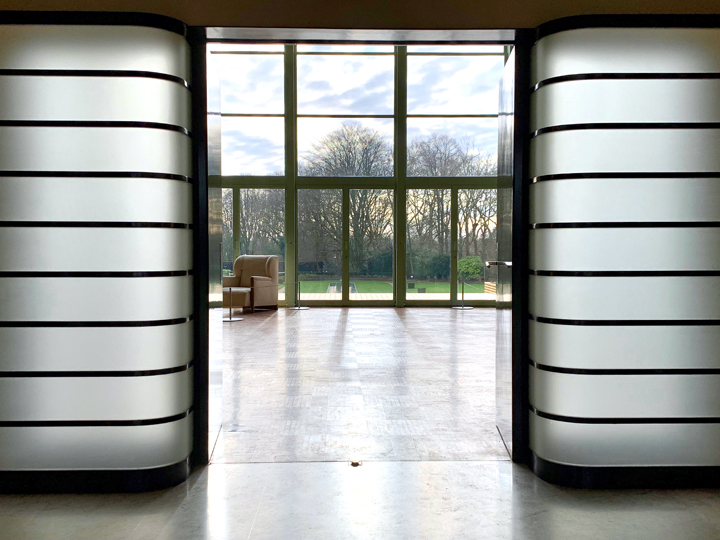By JoAnn Locktov
Ilana Shafir was born in 1924 in the city of Sarajevo, now the capital of Bosnia and Herzegovina. She knew from an early age she was an artist, though her parents were less than enthusiastic.
“In those days to be an artist was not a proper career choice for a woman,” she says. Her studies at the High School for Architecture were disrupted by the Nazi invasion of 1941. Shafir and her family escaped to the small town of Kula, where they miraculously found protection. No one gave them up, not their neighbors, not the Italian nor even the German soldiers. Shafir painted while in hiding, using old book covers for canvases. She painted landscapes and villagers, trading paintings for food. Years later she discovered that both the Italian commander and the local priest had dedicated themselves to saving her family. She believes that “most people, if given the choice, would choose to be kind and humane.”
Shafir continued her studies at the Art Academy in Zagreb, Croatia before emigrating in 1949, at the age of 25, to the coastal town of Ashkelon in Israel. She processed the incomprehensible Holocaust and the loss of her extended family with pen and ink, drawing portraits of arriving immigrants When her sadness was exhausted, Shafir began to explore the beautiful physicality of her new country, both in watercolor and mosaics. The two media are an unlikely pairing. Shafir’s watercolors are ethereal creations of opulent gardens and fantastical creatures. She started with a mono print of abstract stains and drew over the field of colors independent of their abstract shapes until distinct images emerged and every spot of color was defined. It is an unforgiving process that allows no corrections. Shafir credits her years of working in watercolor with providing her the confidence she required to develop
her intuitive method of working in mosaic.
After a lifetime of expressing herself in paintings, drawings and ceramics, Shafir has dedicated herself for the last 20 years to the creation of fine art and architectural mosaics. She works in a garden of ingredients: natural stone, translucent glass, handmade ceramic, rejected sculptures, cast off dishes donated by neighbors, broken tile, Italian smalti, and smooth Mediterranean seashells and pebbles. Buckets of materials litter her studio, sorted by provenance, a choice that acknowledges their intrinsic value of origin.
Her method, which she calls “spontaneous mosaics,” hinges on the respect paid to each individual element. Working without preconceived ideas, sketches or drawings, Shafir places an assorted palette of materials on her work surface. Then, she listens and uses her eyes and ears and her finely tuned sense of the relationship between inanimate objects to allow a synergy to develop. She likens this moment, when two elements become “united and inseparable,” to a mosaic “kiss,” the recognition of a chemistry between two formerly unrelated objects. “I see it with my eyes, but mainly I feel their natural attraction to each other.”
Pieces are chosen, moved, added, rejected, and played with until she is satisfied with their dialogue. Only then are they glued in place. Following this methodology Shafir creates radically textured, brilliantly colored worlds, inhabited by a stunning life force.
At 87, Shafir still travels the world teaching her spontaneous method, encouraging students to discover unexpected solutions. In October, the Association of International Mosaic Artists and the municipality of Ravenna, Italy will honor Shafir with a solo exhibition at the Biblioteca Classense. This is tantamount to ordaining her the matriarch of contemporary mosaic.
The poet Yossi Gamzou said, “There are people with hearts of stone and there are stones with human hearts.” Ilana Shafir has given heart to an ancient craft. In her powerful hands it has become a modern art.
For more information, go tohttp://www.shafirart.com/mosaics.html
For more by JoAnn Locktov, go to http://www.bellafiguracommunications.com/pages/stepdown_publications.html
[slideshow id=486]

